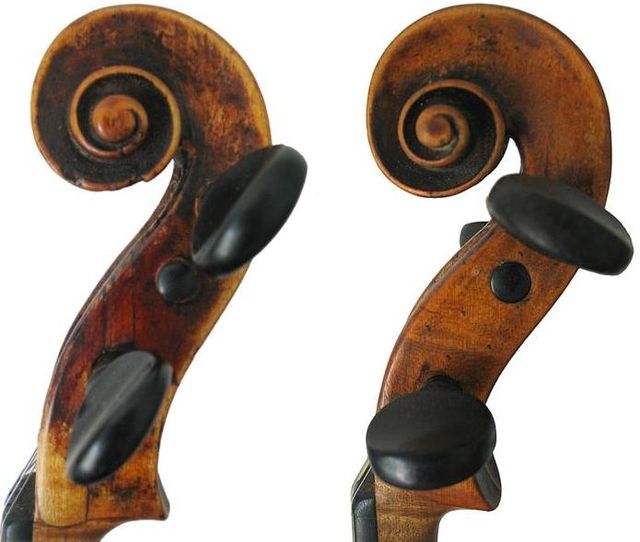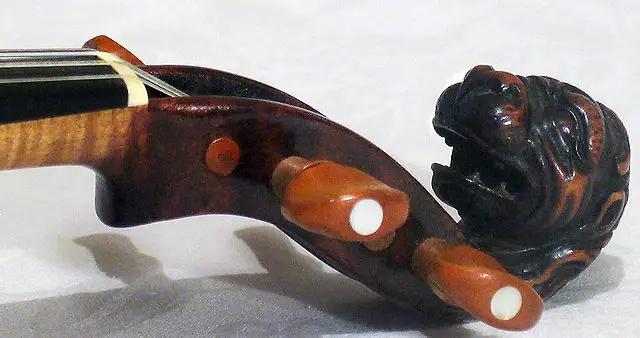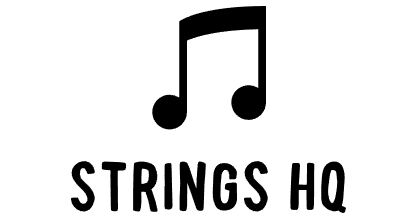Violins are beautiful instruments and exemplify superior design. Especially, in the way sound reverberates and becomes amplified inside them. One part of the violin doesn’t seem to have a specific function though, and that’s the scroll.
If you were wondering why do violins have scrolls, you’re in good company. There are many theories behind that round nautilus-like shape. But none of them came up with a conclusive answer. Most musicians and artisans came to a belief that scrolls are made solely for aesthetic reasons.
Read on to the very end to get the whole story.
Summary
The Violin Scroll doesn’t seem to have a practical function. Yet, its presence adds to the beauty of the instrument and indicates the craftsman’s excellence. Scrolls are usually shaped like a Golden mean spiral or an ancient paper scroll. But there are other head-like scrolls as well. These are often unique and valuable.
Table of Contents
Do Violin Scrolls Have a Practical Purpose?
Violins started appearing around the mid-sixteenth century. The designs, acoustic amplification, and aesthetics were mostly “played by ear”. That is, there’s no documentation of the design process or the sound trials that contributed to the violin’s form.
Interestingly, at that point in time, science hadn’t yet caught up with the nature of sound waves or how they behaved in semi-closed forms. Yet, these violin makers cleverly harnessed sound and knew how to amplify it inside the wooden boxes of the violin.
Every little piece of the violin has a significant functional purpose, except the scrolls! That stunningly beautiful part seems to have a solely aesthetic function.
Then again, the whole point of a violin is beauty, whether that is in the magical music that comes out of it or its unique craftsmanship.
There’s also some usefulness to the violin scroll, which is providing support while tuning the strings and turning the pegs. This is particularly true if the player is holding the bow and tuning the violin with one hand.
The artisans and craftsmen who made the earliest violins were mostly focused on their craft alone. And a good number of them couldn’t really read or write. Thus, the intent and inspiration behind their masterpieces will forever remain a mystery.

Do all Violins Have Scrolls?
Most violins end up with the typical nautilus shape that tapers out of the pegbox. The scroll shape seems to give the violin its distinctive personality. Pretty much the same way the carved hourglass wooden box or the f-holes differentiate it from a guitar or an oud.
There are some exceptions though, and you can spot every once in a while a “kopf”, or a head, instead of the classical scroll.
These heads can be in the images of angels, lions, eagles, or any other figurines that the artisan fancies.
Sometimes, these heads aren’t just the avant-garde creations of a violin maker. They’re made for certain clients who like to go against the grain a little and play their music on a unique violin.
As for electric violins, these mimic classical violins in many ways, but not in their designs. They do have a pegbox, but quite often these instruments go without a scroll entirely.
Then again, the most expensive electric violin, which is a Swarovski design (with Swarovski crystals!), has a classical scroll. This says a lot about the value of that ornament!
What Are the Different Types of Violin Scroll?
Most violins come with a swirl-shaped scroll. The nautilus seems to be a part of the violin’s characterization, much like a top hat for a Victorian gentleman.
This strict tradition of the Italian craftsmen didn’t prevent some other artisans from experimenting with different shapes though. Violin makers in other parts of Europe started making scrolls inspired by human or animal heads.
The violin makers of Austria, Germany, and France were quite the rebels, and their violins with human and animal heads became legendary pieces up till today.
The Standard Nautilus-Type Scroll
The golden standard for violin making remains with two grandmasters: Nicola Amati and Antonio Stradivari.
They were both superb luthiers and they didn’t shy away from making stark innovations in the design of violins. However, they remained true to the classical shape of the scroll. Amati added some detail to the scroll, and Stradivari made sure it reflected his excellence fully.
Human-Faced Scrolls
During the International H. Wieniawski Violin Competition of 2016, the Polish violinist Amelia Maszońska stunned the audience with her performance. But there was something else that caught everyone’s eyes: the scroll of her violin.
Taking a closer look, the audience noticed that instead of the standard nautilus shape, her violin tapered with a human head. Actually, an angel looking up.
On further research, the origin of that breathtaking violin was discovered. A carving on the violin that said “HEL A SON AMI D” revealed the maker. It was crafted by Pierre Joseph Hel back in 1882, which makes it a unique and incredibly valuable instrument.
This violin maker lived in France from 1842 to 1902. He learned the craft during his apprenticeship years with Salzard. In 1865 he started working on his own, and in his lifetime, he made only 750 instruments.
Animal-Head Scrolls
Jacob Stainer’s 1890 Lionhead Violin is among the most famous instruments of our time. It’s also quite an expensive violin.

Steiner is an Austrian artisan who achieved huge fame during the seventeenth century. His violins were present in the grandest chamber music events. And music legends like Bach and Mozart were known to favor his masterpieces.
This unprecedented success lasted well into the eighteenth century, but it came to a gradual halt as a new violin maker came into the scene. Antonio Stradivari created violins that matched the new music and orchestral performances much more than Stainer’s violins.
However, his avant-garde scrolls crafted after angels, women, or lions, remained incomparable.
Does It Matter if a Violin Scroll Gets Damaged?
A violin scroll is basically an ornament, yet if it snaps, playing the violin might prove to be rather difficult.
Depending on the amount of damage, it might still be possible to play. Especially, if the scroll isn’t severed completely, and the pegbox remains intact.
The look of the violin might be discouraging though, and it wouldn’t be seemly at all in a concert or an assembly.
In real-life situations, the scroll rarely snaps alone. Usually, a part of the pegbox goes with it. In that case, it wouldn’t be easy to play with that defective violin at all.
Such situations are depressing to players who get so used to their violins to the point that they can’t think of getting new ones. That’s where the services of a professional luthier come in handy.
There’s a tough decision to be made at that point, which is whether it’s more economic to repair the damaged violin or to buy a new one. The cost of soliciting help from a luthier is often a hefty sum. That’s why it’s more relevant with antique or expensive violins than commercial ones.
What Is a Violin Scroll Made of?
A violin scroll is made from a block of valuable wood. Usually, maple is the first choice, although spruce, mahogany, and cedar are also acceptable for crafting violins.
Traditionally, violin makers would also stipulate that the wood be aged for years. The longer durations seemed to be far better. Some of the great artisans, like Amat and Guarneri, would use wood that’s been aged for 50 years.
Carving the scroll is a meticulous process that also includes creating the pegbox. That’s because the two structures are made from the same wooden block.
The scroll needs to be immaculate from four sides, so the process involves a considerable amount of measuring, as well as working on opposite sides simultaneously.
Watching a violin maker carve out the scroll is a real pleasure, and it definitely adds to the appreciation of the artisan.
Does a Violin Scroll Matter?
The violin scroll is the artisan’s signature and proof of mastery. It’s also a direct indicator of the violin’s worth.
Scrolls matter as much as any artistic and aesthetic endeavor matters. The visual interest created by that convoluted form is undeniable. It gives a logical meaning to the curve of the pegbox, and it tapers the extended length of the neck quite nicely.
Additionally, it balances out the curves of puffing and ribs. These two curvy structures are in opposite planes, and they seem to balance each other perfectly.
Conclusion
Violins have been around for more than 500 years, and since that time, little changes came over them. In fact, musicians are often seeking older violins like the Stradivarius for their incomparable qualities.
The scroll is among the features that stood the test of time, despite being an ornament only. However, this is a visual pleasure that no one is willing to give up.
